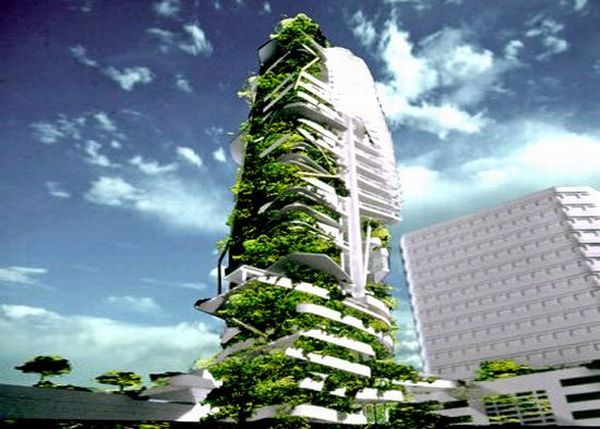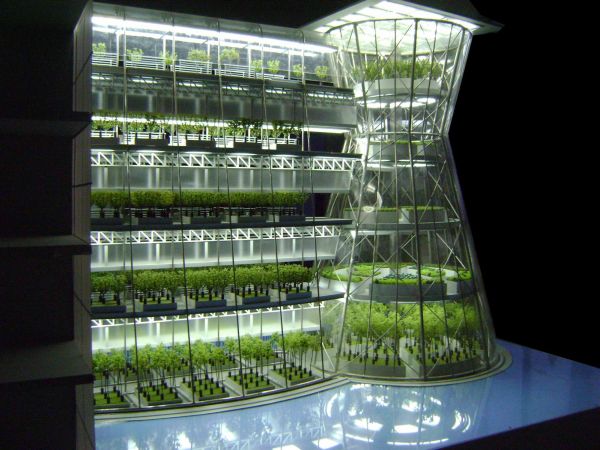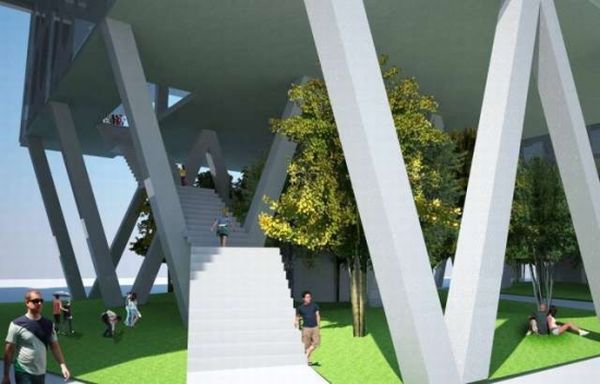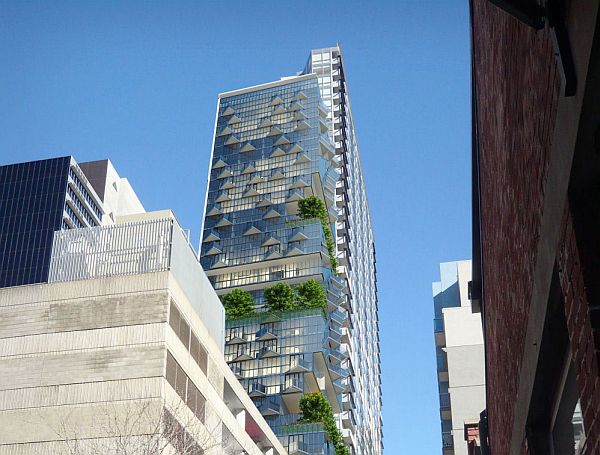
When crammed for space, grow skywards! This seems to be the motto in all sectors from housing to travel. So when somebody speaks of vertical farming, they are definitely not joking. In a hungry world with fast dwindling real estate and exploding populations, vertical farming seems to be the way to go.
Modern designers have dared their dreams to realms beyond convention after embracing the stark reality of food shortages. When one can live in the skies, why not grow food there too? Completing a fairly long gestation period after they were conceived, vertical farming concepts have finally reached delivery stage, not without the labor pains though! So get ready to witness some truly breathtaking vertical farming concepts.
1. Green reaching out to the blues: Farming on Skyscrapers!

It is time for the primary colors to blend into a peaceful white. When green plants reach blue skies with red fruits, can a peaceful life be far away? Call it the heights of farming or farming at heights, this “vertical farm” is the pet project of Dr. Despommier, a professor of public health at Columbia University. Impressed by his dream Scott M. Stringer, president of the Manhattan borough has decided to go ahead with the concept and pilot a vertical farm as his office. Many dub this project as over ambitious and tough but it’s only when the going gets tough that the tough get going.
2. Clepsydra Urban Farming: Vertical greenhouse to bring farming to the cities
There are a few people who can afford to make their buildings as Skyscraper farms. For others, Clepsydra is the way to go. With a capacity to produce food that otherwise would require 6 acres of farmland, this greenhouse structure can be attached to any existing building, be it a school, a mall or a hospital. To avoid welding, the super structure has a framework of industrial steel rods which can be assembled real quick. This added module also helps to eliminate carbon emissions and reduce the wastage of resources involved in the packing, transporting, storing, and selling food from farm to home.
3. Sustainable vertical farm concept grows food hydroponically

Trust the Victorian Eco Innovation Lab to come trumps with a great idea. Built with large floor plates this building raises plants through hydroponics. This means no messy sand or soil as the plants grow on specially prepared nutrient media. The design allows for maximum exposure to natural light and air and minimum dependence on thermal and light regulators. Along with a research center, cafe and offices, the building also boasts of a bio-recycling area. Apart from what is necessary, there are no floor-to-ceiling structures.
4. CK Designworks’ Crystal Gardens project takes vertical farming to the next level

A 35 storey building in Melbourne’s Central Business District makes it crystal clear that green is the way to go higher. Though the building occupies only a small horizontal area of 360 sq m it makes up with vertical landscapes of greenery since every sixth floor has been reserved for gardens with trees even 10 m tall. Add rain water harvesting and energy-efficient appliances to this and the green-worthiness of the building goes notches higher. The gardens are also made multi-directional so that they are useful throughout the year.
5. Singapore to soon flaunt a vertical farm incorporated skyscraper

And finally, this 26 storey skyscraper will be constructed using only recycled or recyclable materials. Its energy demands will be met mostly with its 855 meters of solar panels and a human sewage energy plant that will produce biogas. More than half its surface will feature local flora and its adjustable walls and floors will ensure that there is never a space crunch. With rain water harvesting and gray water utilization, this high rise which has been nicknamed as EDITT (Ecological Design In The Tropics).


